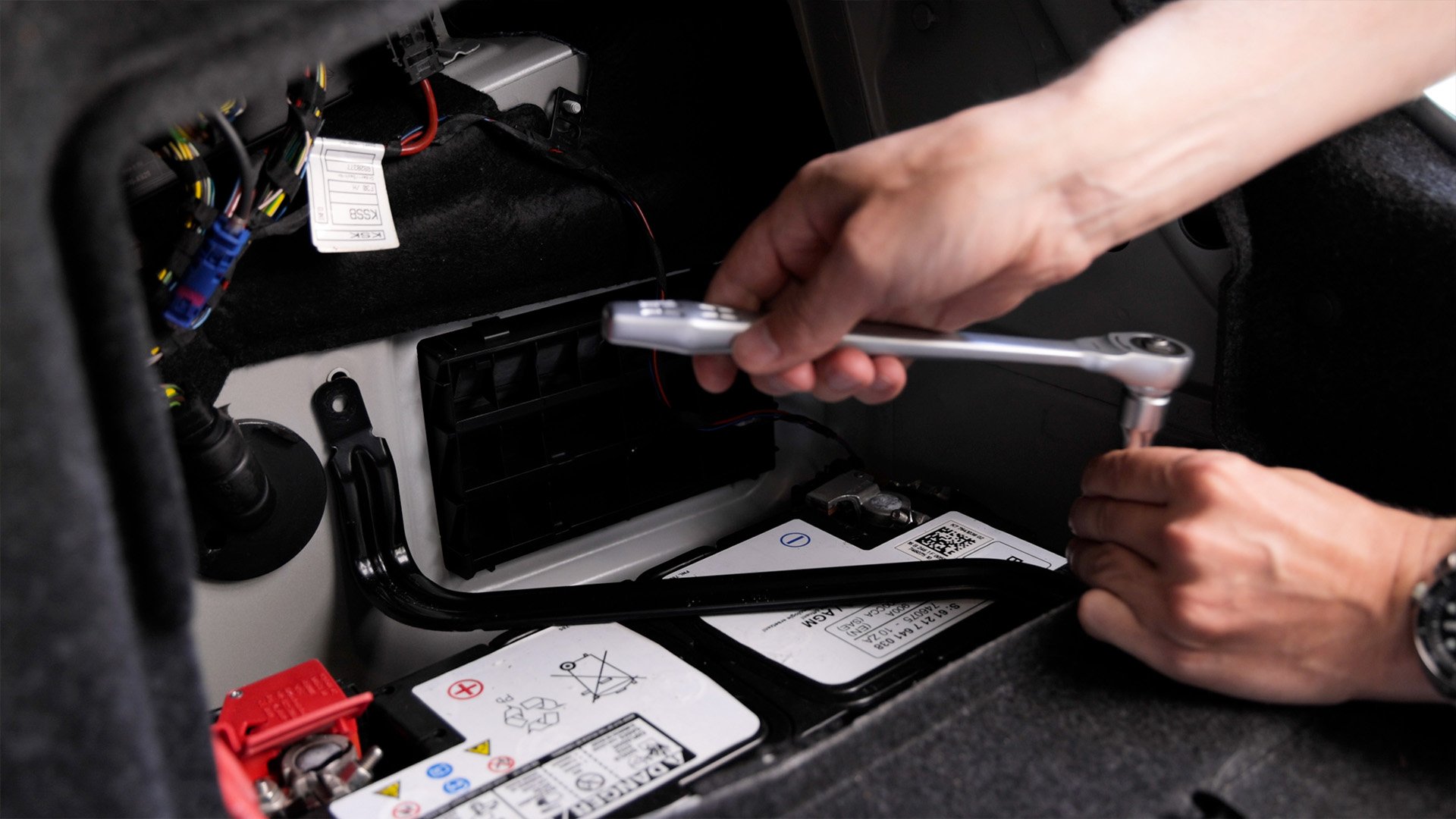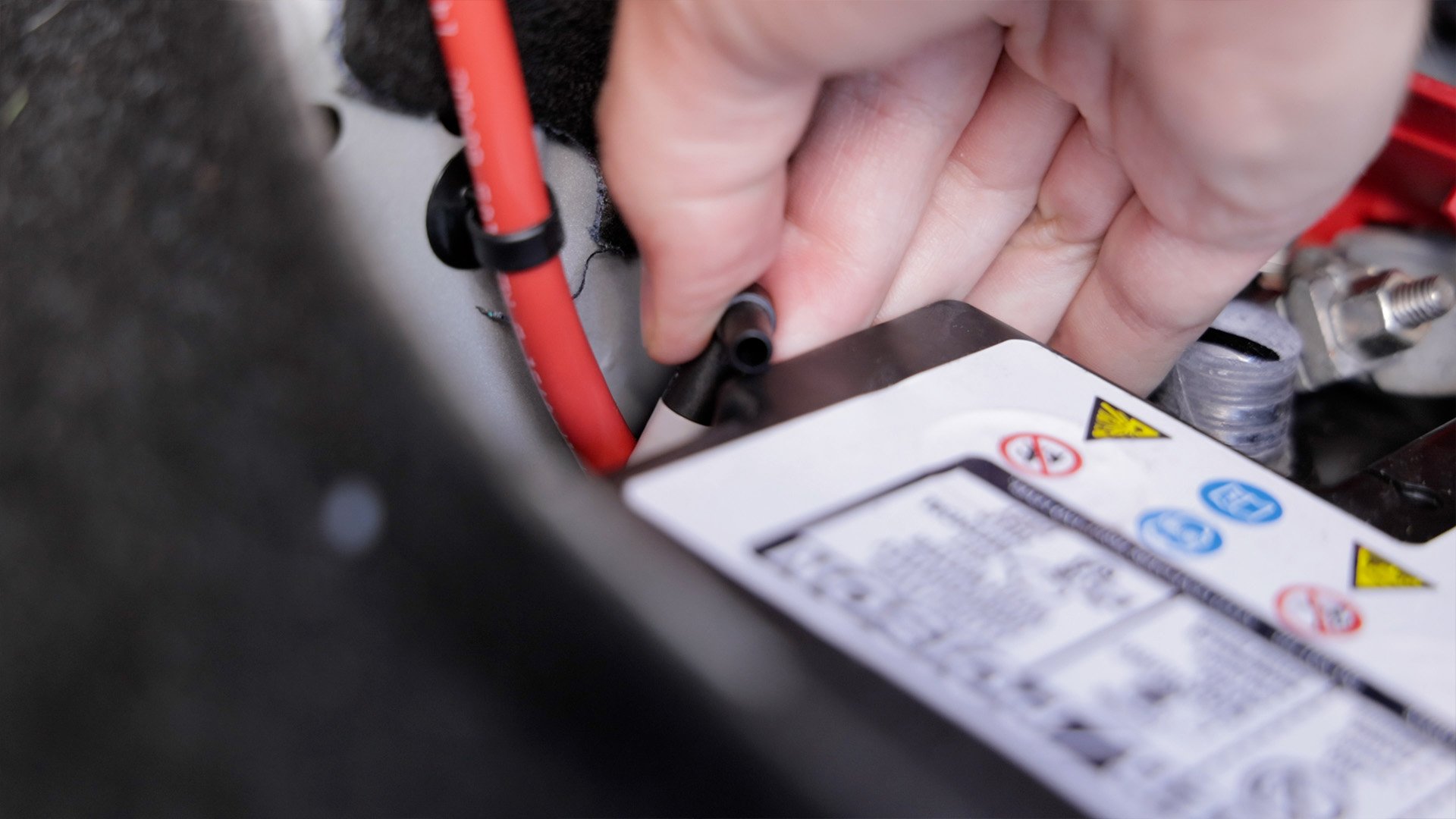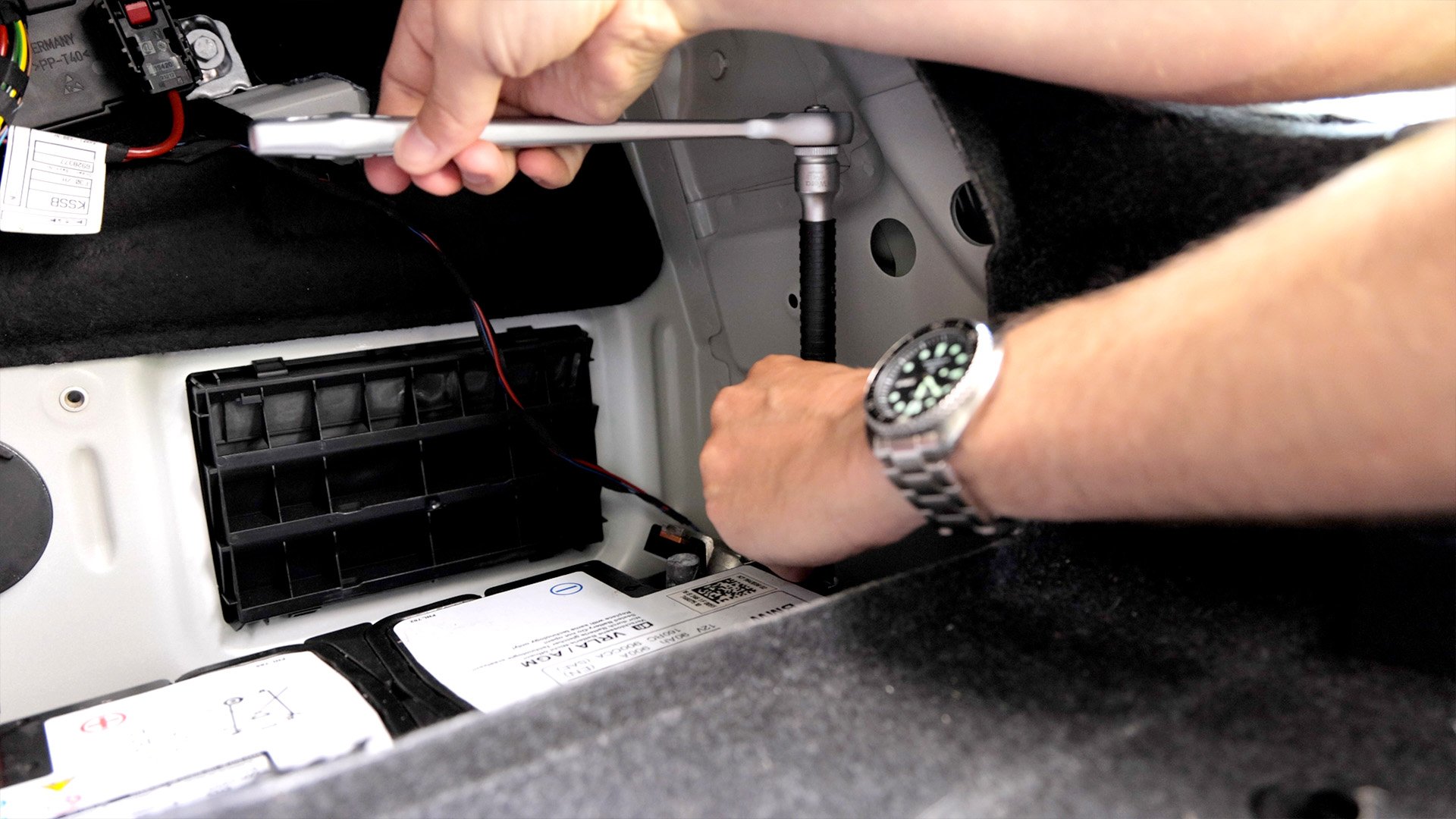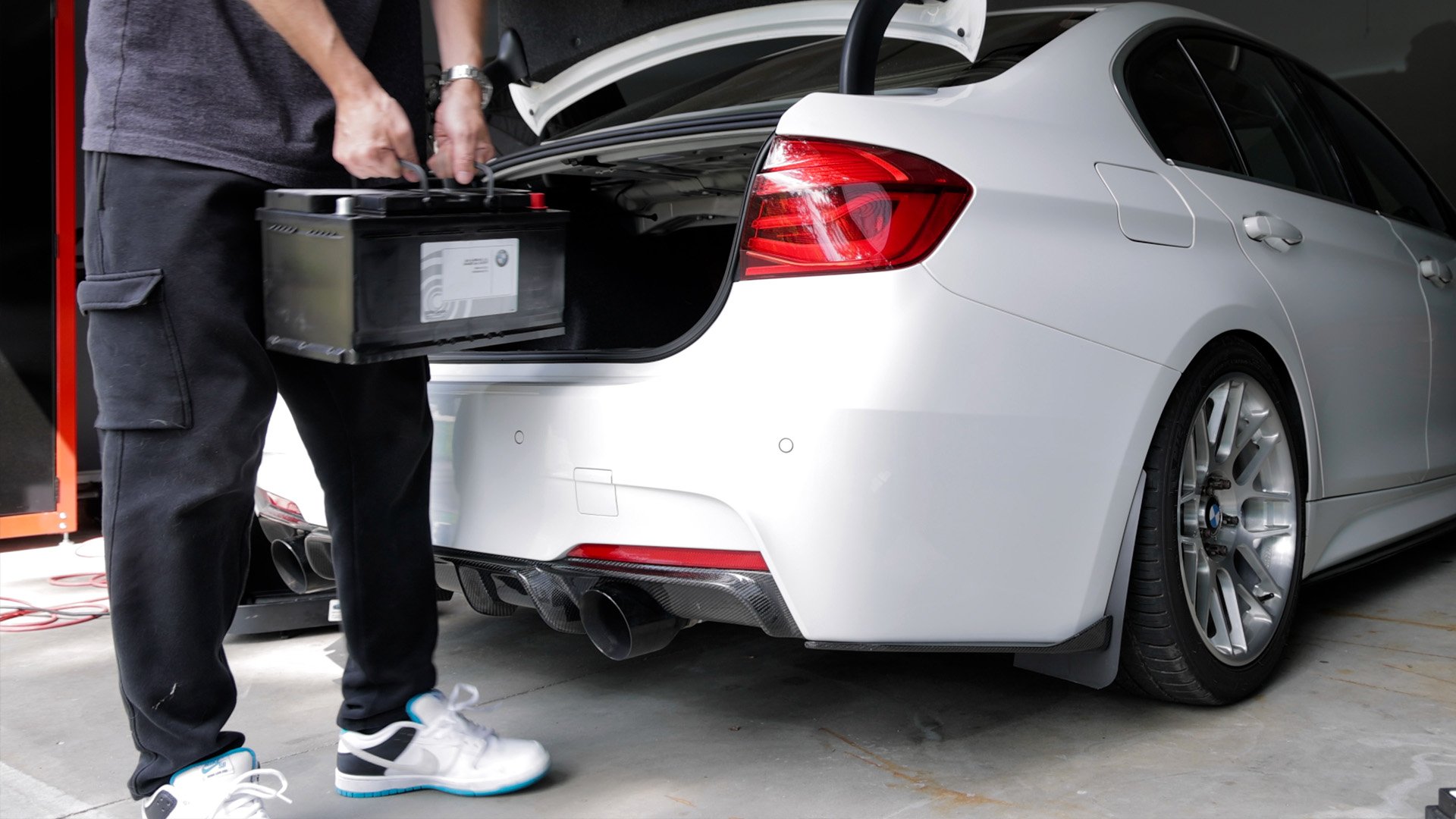This blog post contains affiliate links. If you purchase a product through my custom link, I will earn a commission at no extra cost to you. WIN!
Signs of an aging battery
A few weeks ago, my BMW 3 Series was struggling to start up. It would crank slowly, take several attempts to turn over, and the interior lights would flicker as it cranked. Note - my battery was 5 years old at the time. If you’re battery is 5 years or older and your car is experiencing these symptoms, it may be time for a replacement.
I took my BMW to the local auto-part store to have the battery tested and sure enough, it needed to be replaced. Unfortunately they didn’t have a battery with the specs I needed in stock, but I called my local BMW dealership, BMW of Rochester Hills, and to my surprise, a Genuine BMW battery was not much more expensive than the generic auto-part store alternatives at $276.
BMW 3 Series & 4 Series Battery replacement guide
While some of the specs and hardware mentioned in this guide are specific to the F30 3 Series and F32 4 Series, the process of replacing a BMW battery is similar on most models from 2006 onward.
BMW F30 3 Series BATTERY SPECS (as of August 2022)
Size: Group 49
Type: AGM
Amp Hours: 92ah
Cold Cranking Amps: 850CCA
BMW Part #: 61 21 5 A40
TOOLS REQUIRED
-10mm socket
-13mm socket
-socket extension
-Carly For BMW Adapter or any software that can register a BMW battery
DIY
The battery is located in the trunk on the right hand side.
Step 1: Remove the battery cover from the trunk linker and remove two 10mm bolts for the retaining bracket.
Step 2: Loosen the 10mm nut to remove the negative battery cable from the terminal.
Step 3: Loosen the 10mm nut on the positive battery cable and intelligent battery sensor and move it aside.
Step 4: Remove the vent hose located on the front side of the battery near the positive terminal. This vent allows gasses produced by the battery to escape out of the vehicle.
Step 5: Remove the 10mm bolt at the base of the battery on the negative side. You may need a long extension to reach it.
Step 6 (optional): I used masking tape to hold the negative and positive terminals out of the way during the battery removal and re-installation.
Step 7: Remove the old battery. Use proper lifting techniques as it is super heavy - 53 lbs (24 kg) to be exact, and it’s in an awkward spot in the trunk where you don’t have a lot of leverage.
Step 8: Install the new battery with the positive terminal towards the front of the car and the negative towards the rear. Don’t forget to remove the red plastic cover on the positive terminal or you won’t have power.
Re-assembly: Secure the 10mm bolt at the base of the battery on the negative side, and reinstall the retaining bracket. Connect the negative, then the positive cables. The torque spec for the battery terminals is 10 N⋅m, but I won’t tell anyone if you snug them up by feel. Re-connect the vent hose on the front of the battery and the physical part of the installation is complete.
BMW Battery registration
With the battery installed, we need to register it to the car. BMW’s from the mid 2000’s onward use an algorithm to keep track of the battery’s age which allows the car to adjust the way it charges over time. Whenever you install a new battery, you must register it to the car which resets the battery charging statistics. Failure to do so can result in overcharging and a shorter lifespan of your new battery.
There are a handful of tools that will allow you to do this at home. I’m using Carly For BMW, but BimmerCode or ProTool will work too. Because the Genuine BMW battery is nearly the same specs as the one I’m replacing, I didn’t need to do any additional coding. However, if you happen to buy one that is 80 amp hours instead of 90, you’ll need to code that first before registering. Just a note, the original battery was 90aH hours and the new battery is 92aH. According to the parts guy at the dealership, it’s close enough that I didn’t need to change anything.
Step 1: Plug the Carly adapter into your car’s OBD II port. Press the ignition button once to put your car into accessory mode (without starting the engine), then open the Carly app on your phone and press “Connect”
Step 2: Select “Features” in the lower right corner, then under “Maintenance,” select “Battery Reset.”
Step 3: Register the battery. You can choose to “Register Same Battery” if the capacity and type are the same as before, or “Register New Type Battery” if the capacity or type are different from before. Since my new battery specs were the same as my old one, I chose “Register Same Battery.”
Step 4: Tap “Read Battery Data” which will show your car’s current battery statistics, then tap “Register Same Battery.” After the registration is complete, turn off the ignition, unplug the Carly adapter from your OBD II port, and the next time you start your car, it will begin recording new statistics.
If you want to confirm that the battery registration took, follow the previous steps up to “Read Battery Data,” and the mileage should show the milage the car had at the time of the registration. Prior to registering mine, the battery data showed 0 miles for the first registration (assuming it was the original battery installed at the factory) and 54,625 miles for the 2nd registration (the milage on the car when I replaced the battery).
BATTERY MAINTENANCE
CTEK MXS 5.0 battery tender. When using a battery tender on your F30, use the connections under the hood. There is a positive post (red) near the windshield and a ground near the air intake.
If you don’t drive your BMW everyday, it’s crucial to use a battery tender like this CTEK MXS 5.0 to keep the battery topped off when you aren’t driving. Batteries naturally self-discharge over time, especially in cold weather. And modern cars often have electrical systems that run even when the car is parked, causing even more drain.
Unlike our phones whose batteries can be depleted during the day and charged up at night, car batteries ideally need to be fully charged all the time. Allowing a car battery to fully discharge can cause irreversible damage and will significantly shorten its lifespan. The best case scenario is to drive your car everyday where the battery can be charged by the alternator. But if your car will sit for longer than a couple weeks without being driven, a battery tender like the CTEK mentioned above is a must.










